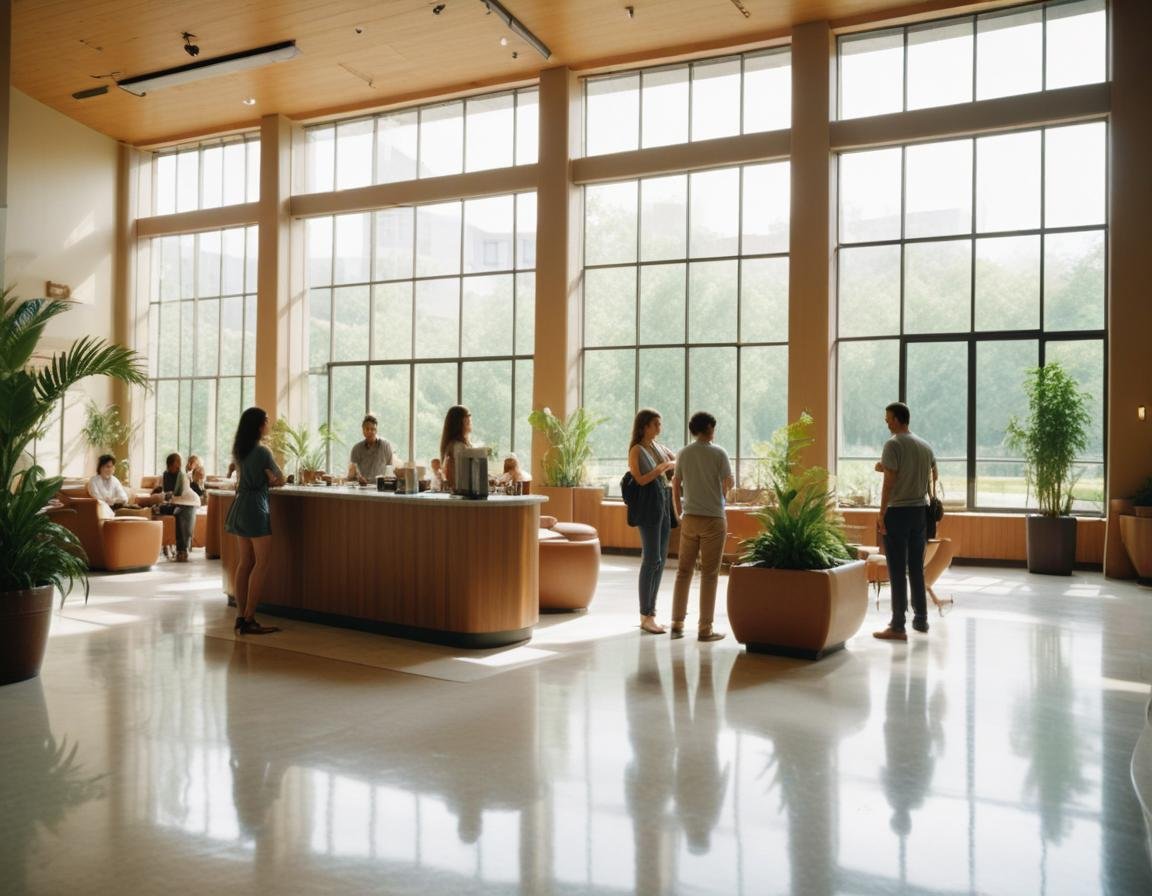Hotels & Accommodations
US Hotel Growth Forecasts Cut for 2025–26 as CoStar and Tourism Economics Warn of Slower Travel Demand

Published on
August 8, 2025 |
By: Tuhin Sarkar
US Hotel Growth Forecasts Cut for 2025–26 as CoStar and Tourism Economics Warn of Slower Travel Demand — this is the reality the hospitality industry is facing right now. US Hotel Growth Forecasts are no longer pointing to the strong upward trend many had hoped for. Instead, forecasts for 2025–26 from CoStar and Tourism Economics have been cut. The reason is clear. These respected analysts now warn that slower travel demand will weigh on hotels across the country.
CoStar has adjusted its figures to reflect a weaker outlook. Tourism Economics has done the same, warning that slower travel demand is becoming a more permanent feature of the market. This change means hotel owners and operators must prepare for tighter margins and more competition for guests. The cut to the US Hotel Growth Forecasts for 2025–26 shows how economic uncertainty, higher costs, and shifting travel habits can reshape an entire industry.
Slower travel demand, as CoStar and Tourism Economics explain, will not stop all growth, but it will make it harder to achieve. Hotels will need to work smarter to attract travellers, maintain rates, and protect profits. The forecast cut for 2025–26 is a signal to the industry to adapt now. Those who take the warnings from CoStar and Tourism Economics seriously will be better placed to navigate slower travel demand and still succeed in a changing market.
A Softer Road Ahead for US Hotels
The US hotel sector is preparing for a slower pace of growth in 2025 and 2026. CoStar and Tourism Economics have revised their forecasts down. They expect demand, Average Daily Rate (ADR), and Revenue Per Available Room (RevPAR) to grow less than first predicted. Profit levels remain stable, but margins are under strain. These updates were shared at the 17th Annual Hotel Data Conference.
The reason for the cut is clear. The economy is showing signs of slower momentum. Inflation is still high. International visitor numbers are not growing as fast as expected. Business and consumer spending is also softer. These factors are affecting how many people travel, how long they stay, and how much they spend on hotels.
What the Numbers Now Show
The changes to the forecast are measurable. For 2025, demand growth has been reduced by 0.6 percentage points. ADR growth is down by 0.5 points. RevPAR growth is lower by 1.1 points. For 2026, demand is cut by 0.5 points, ADR by 0.3 points, and RevPAR by 0.7 points.
GOPPAR, which is Gross Operating Profit Per Available Room, is unchanged. But margins will shrink. Forecasts now suggest a 0.3 percentage point drop in 2025 and a 2.3 point drop in 2026. Food and beverage costs are the biggest risk. Labour, energy, and supply chain costs also remain high.
The US hotel industry is heading for slower growth in 2025 and 2026. CoStar and Tourism Economics have cut their forecasts, signalling weaker demand ahead. The announcement was made at the 17th Annual Hotel Data Conference. Key measures like demand, Average Daily Rate (ADR), and Revenue Per Available Room (RevPAR) are all set to drop. Demand is expected to fall by 0.6 percentage points in 2025 and 0.5 in 2026.
The downgrade reflects the impact of persistent inflation and changing travel behaviour. It also shows that global trade and political uncertainty are shaping travel patterns. While the drop is modest, it comes at a time when hotels are already adjusting to slower international arrivals and tighter consumer spending.
Why the Forecast Has Been Cut
Amanda Hite, president of STR, explained that inflation remains a key factor. Travellers are more cautious with spending. Tough calendar comparisons with previous peak years also make growth harder to achieve. Travel patterns are shifting, with shorter booking windows and fewer extended stays.
These trends are hitting hotel performance across both leisure and business travel segments. The slowdown is not only about fewer guests but also about how much they are willing to spend per stay. Even with these headwinds, industry leaders believe recovery is still possible in the medium term.
Inflation and Travel Patterns Shape 2025 Outlook
Persistent inflation continues to eat into both consumer and corporate travel budgets. Higher prices for flights, food, and experiences have forced many travellers to shorten trips or downgrade hotel choices. This shift reduces ADR growth potential and impacts revenue targets.
Hotels are seeing a change in demand sources. While domestic leisure travel remains resilient, business travel and group bookings have yet to return to pre-pandemic levels. These patterns have made forecasting more complex and forced operators to rethink pricing strategies.
Tariffs and Trade Talks Add to Industry Uncertainty
Aran Ryan from Tourism Economics noted that while the US economy is slowing, it should avoid recession. The bigger concern is the drag from tariffs and ongoing trade negotiations. Tariffs can affect travel indirectly by increasing costs for imported goods and reducing overall consumer confidence.
The conclusion of trade talks could lift sentiment and help stabilise hotel performance. For now, uncertainty over policy direction continues to limit investment and expansion plans for many hotel operators. This environment makes it harder for the industry to commit to large-scale developments.
RevPAR and ADR Growth Lose Momentum
The revised forecast points to slower growth in key performance indicators. RevPAR, a crucial measure of hotel health, is expected to grow more slowly than previously projected. ADR will also face pressure as operators work to keep rooms filled amid softer demand.
For many hotels, the focus in 2025 will be on maintaining occupancy while protecting profitability. This could mean more targeted promotions, dynamic pricing strategies, and a sharper focus on value-added services to attract guests. The competitive landscape will become more intense as operators fight for market share.
ADR and RevPAR Lose Pace
ADR is still expected to rise in 2025 and 2026. But the pace of increase will be slower. This means hotels may not be able to raise rates as much as they did in the last two years. RevPAR, which combines occupancy and ADR, will also grow more slowly.
Hotels will need to be more creative in pricing. Offering value-added packages, loyalty rewards, or flexible booking terms may help keep occupancy up while protecting ADR. Revenue managers will have to focus on balancing price and volume to avoid losing market share.
Margins Under Pressure
Even with stable GOPPAR, hotel margins are forecast to shrink. The main reason is rising costs. Food and beverage departments are under particular strain. Ingredients cost more. Labour costs are climbing. Energy prices remain high.
Hotels will need to find ways to operate more efficiently. This could mean adjusting menus, reducing waste, and using technology to manage staffing. Savings in these areas can help offset higher costs without hurting the guest experience.
The Impact of Tariffs and Trade
Trade disputes and tariffs are an added layer of uncertainty. They can raise costs for imported goods used in hotels, from food to furniture. They can also reduce consumer confidence, making people less likely to travel.
The conclusion of trade talks could bring a lift in sentiment. For now, operators remain cautious about investing in new projects until the policy environment becomes clearer.
The Role of International Travel
International visitors are key to many US markets. Cities like New York, Miami, Los Angeles, and San Francisco depend on overseas travellers for a large share of their hotel business. Visa delays, higher airfares, and political issues have slowed the return of these guests.
Marketing efforts abroad could help. Tourism boards and hotel brands are already targeting campaigns to bring more visitors from Europe, Asia, and South America. If successful, this could ease some of the pressure on urban hotel performance.
Preparing for a Slower Market
Hotels can still succeed in a slower growth market. The focus should be on attracting domestic travellers, enhancing loyalty programmes, and building strong relationships with corporate clients. Flexible pricing can help keep occupancy stable.
Working with event organisers, airlines, and attractions can also create new demand. Bundled deals and cross-promotions can give guests more reasons to book.
GOPPAR Stable but Margins Under Pressure
While the Gross Operating Profit Per Available Room (GOPPAR) forecast remains unchanged, profit margins are expected to tighten. Rising expenses, especially in food and beverage operations, are the main concern. Labour costs, energy prices, and supply chain pressures are also contributing factors.
Hotels may need to adjust service models to manage these costs without damaging guest satisfaction. This could include menu adjustments, energy efficiency upgrades, and selective staffing changes. Operators will have to balance cost control with maintaining the quality of guest experiences.
Policy Shifts Could Lift 2026 Recovery
Both CoStar and Tourism Economics expect conditions to improve in 2026. Tax cuts and reduced policy uncertainty could boost consumer spending and corporate travel budgets. This would help demand recover and support better performance for ADR and RevPAR.
A stabilising global economy and improved trade relations could also encourage more international travel to the US. For now, hotel operators will need to navigate a challenging year while positioning themselves for a possible rebound.
The Role of International Visitors in Growth
Declining international visitor numbers have been a notable factor in the 2025 downgrade. Visa delays, higher travel costs, and geopolitical issues have slowed inbound tourism. This impacts major US cities more heavily, where overseas travellers make up a significant portion of hotel demand.
If inbound travel improves in late 2025 and into 2026, it could give the hotel sector a much-needed lift. Tourism boards and hotel brands are expected to increase overseas marketing efforts to capture this opportunity.
Strategies Hotels Can Use to Offset Slowdown
Hotels can still find growth opportunities despite the weaker forecast. Focusing on domestic markets, leveraging loyalty programmes, and investing in targeted digital marketing can help maintain occupancy. Flexible pricing and tailored packages can also draw in travellers seeking value.
Partnerships with airlines, attractions, and event organisers could generate new demand streams. Hotels that adapt quickly to changing travel patterns will be better placed to outperform in a slower market.
Industry Remains Cautiously Optimistic
Despite the downgrade, industry leaders are not predicting a downturn as severe as past crises. The fundamentals of US tourism remain strong. There is still steady demand for leisure travel, and business travel is slowly recovering.
The key for 2025 will be resilience and adaptability. Hotels that manage costs, maintain service quality, and stay aligned with evolving guest needs can still achieve healthy performance even in a softer growth environment.
Long-Term Growth Still Possible
While 2025 will be a year of slower growth, the long-term outlook for the US hotel sector remains positive. Economic cycles are natural, and recovery periods often lead to innovation and stronger business models.
Investments in technology, sustainability, and guest experience will be critical in shaping the industry’s future. Those who prepare now will be best positioned to capture market share when demand accelerates again.
Hotels & Accommodations
Paris, Nice, And Marseille Dominate Luxury Hotel Bookings In France

Published on
August 8, 2025 |
By: TTW News Desk
France has regained its status as the top choice for luxury hotel bookings in July 2025, according to recent data from the Global Travel Collection. The data reflects bookings made by luxury travel advisors from both the U.S. and the U.K. It shows a 64% year-over-year increase in bookings for France, making it the most popular European destination for high-end travelers. This increase comes as Paris, Nice, and Marseille become the leading cities, pushing Italy into second place for the first time in years.
This shift in interest highlights a growing appeal for French destinations. It is the first time France has outpaced Italy in luxury bookings since 2019. For those looking for the finest accommodations and experiences, the rise in French bookings signals the country’s lasting attraction in the high-end tourism market.
The Rise of France: Paris, Nice, and Marseille Lead
The figures for July 2025 show that Paris remains the crown jewel of French tourism, with 2,710 nights booked in its top luxury hotels. Paris is known for its iconic landmarks, upscale shopping areas, and world-class dining options. These factors continuously attract tourists seeking an exceptional cultural experience. Hotels like Le Bristol Paris, a symbol of elegance, and Oetker Hotels, which provide Parisian sophistication, are favorites among travelers.
Following Paris, Nice ranked second in bookings, with 1,313 nights reserved. Nice is a Mediterranean paradise, celebrated for its stunning coastline, charming streets, and lively French Riviera vibe. Luxury hotels like The Maybourne Riviera, overlooking the Mediterranean Sea, offer guests outstanding views and lavish experiences.
Marseille, the third most popular destination in France for luxury bookings, accounted for 286 nights in July. This historic port city, with its rich cultural background, is becoming a favorite for tourists seeking an authentic Mediterranean experience paired with luxury.
The Italian Competition: Italy Takes Second Place
While France has climbed to the top, Italy remains a major destination for high-end travelers, holding the second position in luxury bookings. Rome, Milan, and Naples were among the most booked cities for luxury stays in Italy, with 777 nights reserved in Rome, 725 nights in Milan, and 679 nights in Naples.
Rome, known for its timeless history and vibrant energy, continues to be a popular choice. Hotels like Hotel Eden, located in the heart of the city, and Passalacqua, on Lake Como’s shores, keep attracting those looking for luxurious, intimate experiences in Italy’s capital.
Milan, recognized as Italy’s fashion and design hub, also brought in a significant number of luxury travelers in July. Romazzino, a Belmond Hotel on Sardinia, is a top pick for those seeking a glamorous getaway.
The U.K. and Spain: Close Contenders in the Rankings
The United Kingdom performed well in the rankings, landing in third place with a 13% increase in luxury bookings compared to July 2024. London is still the main hub for luxury travel, with standout hotels like Soho’s Ham Yard Hotel, the iconic art deco Claridge’s, and the exclusive Flemings Mayfair continuing to draw high-end tourists. These hotels, noted for their unique designs and luxurious services, provide unmatched experiences for travelers visiting the U.K.
Meanwhile, Spain is gaining popularity, with Barcelona and the Balearic Islands emerging as favorites for luxury travelers. Barcelona attracted many high-end visitors, with hotels such as the Majestic Hotel & Spa, Mandarin Oriental Barcelona, and Le Meridien Barcelona being popular choices. Demand for luxury stays in Ibiza also grew, with notable hotels like the Nobu Hotel Ibiza Bay and Six Senses Ibiza leading the way.
The Growing Trend of Balanced European Travel Demand
Increased interest in France has shifted the previous dominance of Italian tourism. Angie Licea, President of Global Travel Collection, notes that the rise in French luxury bookings shows a growing demand for diverse destinations across Europe. For years, Italy led the luxury travel market, but France’s recent growth indicates that travelers are exploring a wider range of European locations.
This trend benefits places like Nice, Marseille, and Reykjavík, which were once overshadowed by well-known Italian cities. The French Riviera and the historic areas of Marseille now have a spot on the luxury travel map, providing new and exciting opportunities for travelers seeking different experiences.
Conclusion: A Positive Shift for European Tourism
The latest data from Global Travel Collection underscores a significant shift in the European luxury travel market. With France rising to the top, led by Paris, Nice, and Marseille, the competition with Italy suggests a positive movement toward more diverse European travel. This trend is encouraging for tourism overall, indicating that travelers are discovering new destinations and spreading their visits more evenly across the continent.
For tourism professionals and travelers, this new dynamic in European luxury tourism offers an exciting future for those seeking the best in high-end accommodations, unique cultural experiences, and stunning scenic views. With France leading in bookings and other countries following, the future of luxury European travel looks bright for both established and emerging destinations.
(Source: Global Travel Collection, Hellenic Chamber of Hotels, U.S. and U.K. Luxury Travel Advisors, Rightmove, Lloyds Bank)
Hotels & Accommodations
Is Berkeley’s Hotel Industry Overcoming Rising Costs and Soft Demand with Resilience and Steady Tourism Recovery Compared to San Francisco and Oakland? Here’s More New Information For You

Published on
August 8, 2025 |
By: TTW News Desk
Berkeley, a city known for its academic legacy and vibrant cultural scene, has not been immune to the struggles that have beset the hospitality industry in the Bay Area. Since the pandemic, the local hotel market has faced a range of challenges, from a decline in demand to rising operational costs. However, while several hotels have closed their doors or filed for bankruptcy, there are signs of resilience in Berkeley’s hotel industry. The city’s steady recovery, aided by its unique position as a college town, provides an interesting perspective on how some areas are faring better than others in the region.
Soft Demand and Rising Costs Impact Berkeley’s Hotel Market
The aftermath of the pandemic has left a significant mark on the global tourism industry, and Berkeley’s hospitality sector has not escaped its effects. Like many cities, Berkeley has seen softer demand for hotel rooms, as travelers continue to navigate concerns over safety, convenience, and cost. The double impact of reduced demand for both business and leisure travel, coupled with rising costs for essentials such as labor and supplies, has made it increasingly difficult for local hotels to remain profitable.
While Berkeley’s hotel tax revenues have dropped, they have not suffered the same dramatic losses as those seen in other parts of the Bay Area. Still, some of the city’s largest hotels have faced serious financial challenges. For example, the DoubleTree by Hilton, the largest hotel in Berkeley, located at the waterfront, faced financial turmoil after ceasing rent payments on its city-owned property earlier this year. The property was reportedly at risk of defaulting on a $48.3 million loan, underlining the pressures many hotels face as they attempt to recover from the pandemic’s economic toll.
The University Inn and Suites in West Berkeley, another local hotel, declared bankruptcy in June, highlighting the difficulties small and mid-sized hotels are experiencing. This follows a trend seen across the country, where hotels that rely on a combination of transient business, convention traffic, and tourism are feeling the strain. A more significant concern for Berkeley was revealed in May when it was disclosed that several large hotels had stopped paying their nightly room taxes. This issue has contributed to a shortfall in the city’s hotel tax revenues, which fell below pre-pandemic levels.
Despite these setbacks, Berkeley’s hospitality sector has shown surprising resilience. While hotel occupancy rates in the first half of 2025 were consistently lower than in 2019, the city’s hotel revenues have remained relatively stable. This has been attributed to the consistent flow of visitors, drawn in part by Berkeley’s prominent position as a college town and its proximity to major Bay Area attractions.
Shifting Hospitality Landscape in Berkeley
Berkeley’s unique identity as a college town has played a crucial role in its ability to weather the storm. While larger cities like San Francisco and Oakland have been plagued by significant declines in convention business and corporate travel, Berkeley has maintained a steady stream of visitors related to the University of California, Berkeley. This steady influx of students, academics, families visiting students, and faculty has provided a buffer against the broader declines seen in the hotel industry. The consistent demand from these visitors has helped local hotels maintain a relatively stable revenue base, compared to other parts of the Bay Area.
Moreover, Berkeley has also seen some growth in its hotel inventory. The addition of the Residence Inn in downtown Berkeley in 2021 has helped offset the losses from the closure of some older hotels. The Residence Inn, with its extended-stay accommodations, has contributed to an increase in the number of available hotel rooms in the city. As a result, Berkeley’s total hotel room inventory has grown slightly, from 1,471 before the pandemic to 1,514 rooms today. This growth in room availability has helped ensure that the city is not entirely dependent on any single sector of the hospitality industry.
However, not all hotels in Berkeley have remained open. The Bancroft Hotel, a historic building located across from the UC Berkeley campus, closed its doors after its owner sought city approval to convert the property into student housing. This trend of repurposing hotels for non-tourism uses reflects broader shifts in the region’s hospitality market, as hotels increasingly compete with short-term rental platforms like Airbnb and other alternative accommodations.
The Impact of Rising Costs on Berkeley’s Hotel Industry
As with other parts of the Bay Area, Berkeley’s hotels are grappling with rising costs that have put pressure on their profitability. These costs have been exacerbated by inflation, particularly in labor, insurance, and supply chain disruptions. The increased cost of doing business has made it more difficult for hotels to remain competitive, especially for mid-range and lower-tier properties. For example, the rise in labor costs has made it harder for hotels to maintain their operations without increasing prices, which could deter budget-conscious travelers.
The increase in costs also makes it difficult for local hotels to remain competitive with alternative accommodations such as Airbnb, which often offer lower prices and more flexible options for travelers. This shift has made it harder for hotels to maintain occupancy rates, and many have had to adjust their business models to meet the changing needs of travelers. Some hotels, like the Residence Inn, have adapted by targeting longer-term stays and offering special pricing for student accommodations, reflecting a broader trend in the market toward more flexible, affordable travel options.
Tourism Recovery in Berkeley: A Steady, Long-Term Process
While other parts of the Bay Area have seen slower recoveries, particularly in the San Francisco and Oakland markets, Berkeley’s tourism industry has shown a steady rebound. The city has benefitted from its unique position as a hub for academia and culture, as well as its status as a more affordable alternative to some of the region’s more expensive tourist destinations. Berkeley’s tourism office, Visit Berkeley, has focused on leveraging these advantages to position the city as a desirable destination for visitors from across the globe.
One of the key factors driving Berkeley’s recovery has been its growing reputation as a welcoming city for a diverse range of travelers. Visit Berkeley’s marketing campaigns have focused on attracting visitors from Mexico and Canada, as well as LGBTQ+ travelers seeking a progressive, inclusive destination. This shift in focus reflects the city’s progressive values and its emphasis on creating an environment where all visitors feel welcome.
Additionally, Berkeley has capitalized on its cultural assets, including its proximity to the UC Berkeley campus, the Lawrence Berkeley National Laboratory, and a host of outdoor activities in the surrounding areas. These attractions, combined with the city’s vibrant dining scene and eclectic neighborhoods, make it an appealing destination for tourists seeking both culture and relaxation.
Berkeley’s Hotel Industry: A Model of Resilience Amid Broader Struggles
Despite the challenges posed by the pandemic, rising costs, and soft demand, Berkeley’s hotel industry has demonstrated resilience. The city has not experienced the steep declines in hotel revenues and occupancy rates seen in nearby cities like San Francisco and Oakland. While there are still obstacles to overcome, the steady flow of visitors and the diversification of the city’s hotel offerings suggest that Berkeley is on a path to sustained recovery.
The situation in Berkeley’s hospitality market offers valuable lessons for other cities grappling with similar challenges. By leveraging its unique position as a college town, focusing on sustainable tourism, and adapting to the changing needs of travelers, Berkeley has been able to navigate the post-pandemic landscape more effectively than many other regions in the Bay Area.
As the tourism sector continues to evolve, Berkeley’s ability to adapt to new trends, from student accommodations to alternative lodging options, will play a key role in ensuring the long-term health of its hotel industry. By focusing on inclusivity, sustainability, and cultural tourism, Berkeley is positioning itself as a key player in the future of Bay Area tourism.
Conclusion
Berkeley’s hotel industry, like much of the Bay Area, faces ongoing challenges as it recovers from the impacts of the pandemic. Rising costs, soft demand, and increased competition from alternative accommodations have put pressure on the local hospitality sector. However, the city’s unique position as a college town, combined with its focus on sustainable and inclusive tourism, has allowed it to weather the storm more effectively than other regions. With steady recovery and a focus on attracting diverse visitors, Berkeley’s hotel industry is poised for a bright future.
Hotels & Accommodations
Berkeley keeps losing hotels, but industry healthier than elsewhere

Berkeley’s college-town identity has helped shield the city from the worst impacts of a hospitality downturn that has battered hotels around the Bay Area. But a string of gloomy stories shows the city isn’t immune from the struggles the hotel industry has faced since the pandemic upended travel.
The biggest hotel in Berkeley, the 378-room DoubleTree by Hilton on the waterfront, stopped paying rent for its city-owned property early this year, and the real estate news site The Real Deal reported it was at risk of defaulting on a $48.3 million loan. The University Inn and Suites in West Berkeley declared bankruptcy in June, the Mercury News reported, a few months after defaulting on a $10.5 million loan.
Staff in Berkeley’s finance office also revealed in May that two large hotels — the city has refused to say which ones — stopped paying their nightly room taxes during the last fiscal year, further reducing hotel tax revenues that are below pre-pandemic levels.
Meanwhile, there have been signs that the industry isn’t as attractive as it once was: The city has acquired six motels and hotels through state programs that provide funding for local governments to convert commercial lodging into housing for the homeless. The Bancroft Hotel, across from UC Berkeley, closed its doors not long after its owner sought city approval to convert the historic building into student housing. And the Residence Inn Berkeley, the 16-story hotel that opened downtown in 2021, also made a play for the housing market: Until recently, it advertised room plans aimed at Cal students that ranged from $999 per month to share a one-bedroom suite with three roommates to $3,999 to have one all to yourself.
The Bay Area has had a slower pandemic recovery than any other large hotel market in the country, according to the real estate analytics firm CoStar. And data from Visit Berkeley, the city’s tourism office, show occupancy rates for hotel rooms during the first half of 2025 were consistently lower than the same period in 2019.
But Visit Berkeley officials say the city is faring better than others around the region: Berkeley hotels’ nightly rates are higher than they were before the pandemic, and overall revenues are about even with pre-COVID figures.
“Berkeley is doing relatively well,” Visit Berkeley CEO Jeffrey Church said. “We do have a consistent flow of people coming in.”
Bay Area hotels struggling
None of Berkeley’s four largest hotels were interested in talking about how business is going these days — representatives for the DoubleTree, Residence Inn Berkeley, Hotel Shattuck Plaza and Graduate by Hilton Berkeley all either declined interview requests or didn’t respond to them. (The Claremont Resort and Club has a Berkeley address, but is actually across the border in Oakland, and pays its taxes there.)
Adrian Larick, a spokesperson for the Residence Inn Berkeley, wrote in an email that the hotel is no longer offering student housing, but would not say whether it had leased rooms to tenants in the past. Staff from the Berkeley Rent Stabilization Board said the hotel has not registered any housing units with the city, which would have been required if any were rented for 14 days or longer.
Data from CoStar show revenue per available room, a core metric in the industry, is down 29% compared to 2019 in the Oakland market, which includes Alameda and Contra Costa counties. It has fallen 25% in the San Francisco market, covering portions of San Francisco, Marin and San Mateo counties.
Michael Stathokostopoulos, CoStar’s senior director of hospitality analytics, said there are several reasons for those declines. Years of negative national press about San Francisco has deterred tourists and organizers of major conventions, Stathokostopoulos said, while corporate travel still hasn’t returned to pre-pandemic levels. Those factors, he said, have been magnified on this side of the bay, where anxiety about crime and the departure of three Oakland sports teams has further reduced demand.
“Some of these demand drivers have not been back to where they were,” Stathokostopoulos said.
Experts hoped international tourism would complete its pandemic recovery this year, but it has instead slumped under the Trump administration, as people view the United States as more hostile and Canadian travelers in particular skip American vacations. Stathokostopoulos said mid-range and lower-tier hotels have especially been hurting as less-wealthy domestic travelers look to save money by taking cruises or booking cheaper short-term rentals on platforms such as Airbnb.
“They have been feeling the pressures of inflation and high costs, and they have been looking for other ways to travel,” he said.
On top of softer demand, hotels have also faced rising costs for labor, insurance and supplies, further cutting into margins.
Two hotels stiffed Berkeley on tax payments
The softer hotel market has financial consequences for Berkeley: The city took in just shy of $7 million from its nightly room tax in the 2024 fiscal year, which was down from $7.5 million the year before and about $1 million less than it made from the tax in 2019.
Finance officials projected revenue from the tax would rise to $7.7 million the 2025 fiscal year, which ended June 30. But as city leaders grappled with a budget deficit this spring, finance staff warned in a report to the City Council that revenue from the “transient occupancy tax” was coming in lower than expected because one of the city’s largest hotels had not paid the tax for the past nine months, and another hadn’t paid in two months.
City spokesperson Seung Lee declined to identify the hotels in response to a Berkeleyside inquiry last month, writing in an email, “We cannot disclose taxpayer information.” Lee said one of the hotels has since paid its outstanding taxes, while the city was “working with” the other on payments, but declined to say whether that was the hotel with nine months of unpaid taxes or two.
Lee said hotel tax revenue figures from the most recent fiscal year were not yet available. The city projects revenue from the tax will stay flat through the middle of 2029.
Fewer ‘peaks and valleys’ in Berkeley’s recovery
Unlike cities that depend on conventions luring big crowds to their hotels, being home to a major university means Berkeley has a more dependable source of visitors. After all, it’s not like scientists headed to Lawrence Berkeley National Laboratory, or the thousands of family members who show up for move-in, graduation and move-out, could decide to go to Las Vegas instead.
“We don’t have as many peaks and valleys,” Church said, meaning that in the wake of the pandemic, “We’ve been able to build back up consistently.”
Although several Berkeley hotels have closed over the past five years, the opening of the downtown Residence Inn has made up for those losses — the city’s total room inventory is up slightly, at 1,514, compared to 1,471 before the pandemic. There are 14 hotels and motels across Berkeley today.
Hospitality experts see reason for the Bay Area to be optimistic about the future. The market got a major boost in January when the NBA All-Star Game was held at Chase Center. Many hope that weekend was a preview of what’s to come next year, when Levi’s Stadium hosts the Super Bowl and World Cup games, which are expected to draw legions of visiting fans to the Bay Area.
The Trump administration’s efforts to slash research funding and target higher education could represent a threat to the academic travel that has insulated Berkeley from upheaval over the past five years. But Church said Visit Berkeley hasn’t seen any sign of that so far.
Instead, the tourism board is leaning into Berkeley’s progressive reputation, with ads that aim to attract queer travelers and visitors from Mexico and Canada. The pitch, in Church’s words: “Berkeley continues to be a welcoming destination for people from all over the world.”
-

 Brand Stories3 weeks ago
Brand Stories3 weeks agoBloom Hotels: A Modern Vision of Hospitality Redefining Travel
-

 Brand Stories2 weeks ago
Brand Stories2 weeks agoCheQin.ai sets a new standard for hotel booking with its AI capabilities: empowering travellers to bargain, choose the best, and book with clarity.
-

 Destinations & Things To Do3 weeks ago
Destinations & Things To Do3 weeks agoUntouched Destinations: Stunning Hidden Gems You Must Visit
-

 Destinations & Things To Do2 weeks ago
Destinations & Things To Do2 weeks agoThis Hidden Beach in India Glows at Night-But Only in One Secret Season
-

 AI in Travel3 weeks ago
AI in Travel3 weeks agoAI Travel Revolution: Must-Have Guide to the Best Experience
-

 Brand Stories1 month ago
Brand Stories1 month agoVoice AI Startup ElevenLabs Plans to Add Hubs Around the World
-

 Brand Stories4 weeks ago
Brand Stories4 weeks agoHow Elon Musk’s rogue Grok chatbot became a cautionary AI tale
-

 Brand Stories2 weeks ago
Brand Stories2 weeks agoContactless Hospitality: Why Remote Management Technology Is Key to Seamless Guest Experiences
-

 Asia Travel Pulse1 month ago
Asia Travel Pulse1 month agoLooking For Adventure In Asia? Here Are 7 Epic Destinations You Need To Experience At Least Once – Zee News
-

 AI in Travel1 month ago
AI in Travel1 month ago‘Will AI take my job?’ A trip to a Beijing fortune-telling bar to see what lies ahead | China













You must be logged in to post a comment Login